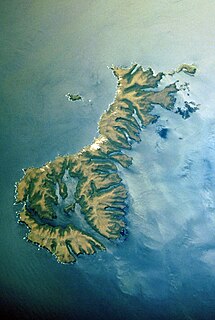
The Auckland Islands are an archipelago of New Zealand, lying 465 kilometres (290 mi) south of the South Island. The main Auckland Island, occupying 510 km2 (200 sq mi), is surrounded by smaller Adams Island, Enderby Island, Disappointment Island, Ewing Island, Rose Island, Dundas Island, and Green Island, with a combined area of 626 km2 (240 sq mi). The islands have no permanent human inhabitants.
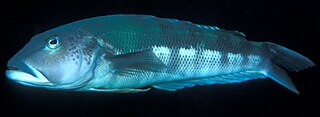
The New Zealand blue cod is a temperate marine fish of the family Pinguipedidae. It is also known variously as Boston blue cod, New Zealand cod, sand perch, or its Māori names rāwaru, pākirikiri and patutuki.

The New Zealand sea lion, also known as Hooker's sea lion, and whakahao in Māori, is a species of sea lion that primarily breeds on New Zealand's subantarctic Auckland and Campbell islands and to some extent around the coast of New Zealand's South and Stewart islands. The New Zealand sea lion numbers around 10,000 and is perhaps the world's rarest sea lion species. They are the only species of the genus Phocarctos.

Arctocephalus forsteri is a species of fur seal found mainly around southern Australia and New Zealand. The name New Zealand fur seal is used by English speakers in New Zealand; kekeno is used in the Māori language. As of 2014, the common name long-nosed fur seal has been proposed for the population of seals inhabiting Australia.
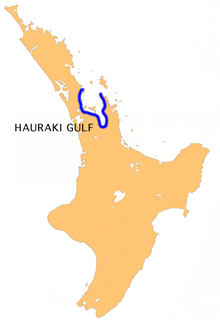
The Hauraki Gulf / Tīkapa Moana is a coastal feature of the North Island of New Zealand. It has an area of 4000 km2, and lies between, in anticlockwise order, the Auckland Region, the Hauraki Plains, the Coromandel Peninsula, and Great Barrier Island. Most of the gulf is part of the Hauraki Gulf Marine Park.

A principle is a proposition or value that is a guide for behavior or evaluation. In law, it is a rule that has to be or usually is to be followed. It can be desirably followed, or it can be an inevitable consequence of something, such as the laws observed in nature or the way that a system is constructed. The principles of such a system are understood by its users as the essential characteristics of the system, or reflecting system's designed purpose, and the effective operation or use of which would be impossible if any one of the principles was to be ignored. A system may be explicitly based on and implemented from a document of principles as was done in IBM's 360/370 Principles of Operation.
The tertium quids were various factions of the Democratic-Republican Party in the United States from 1804 to 1812.

The dumb gulper shark is a rare and endangered deepwater dogfish, known from only along the east coast of Australia and isolated spots north and west of New Zealand. It is also known as the dumb shark, Harrison's deep-sea dogfish, or Harrison's dogfish.
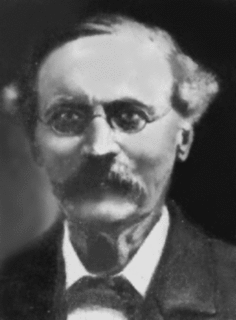
Captain Frederick Wollaston Hutton was an English-New Zealand scientist who applied the theory of natural selection to explain the origins and nature of the natural history of New Zealand. An army officer in early life, he then had an academic career in geology and biology. He became one of the most able and prolific nineteenth century naturalists of New Zealand.

The mandarin dogfish is a dogfish, a member of the family Squalidae in the order Squaliformes. It is found at depths of 140–650 metres (460–2,130 ft) off southern Japan, Taiwan, and Indonesia. Populations off Australia and New Zealand were formerly included in this species, but in 2007 these were assigned to a new species, the southern mandarin dogfish. It is not clear which of these species is involved in other populations from the tropical West Pacific.
Arthur William Baden Powell was a New Zealand malacologist, naturalist and palaeontologist, a major influence in the study and classification of New Zealand molluscs through much of the 20th century. He was known to his friends and family by his third name, "Baden".

Nototodarus sloanii is a species of squid commonly known as the New Zealand arrow squid or Wellington flying squid. It is also known by its Māori name of Wheketere. It is a favoured prey species of a number of marine mammals and diving birds. It is an important food source for the New Zealand fur seal and the endangered species: New Zealand sea lion and yellow-eyed penguin. N. sloanii is sought by trawler fishermen for human consumption; in this trawling process, Australian sea lions are frequently killed, since they prey upon N. sloanii.

The Cimidae is a taxonomic family of sea snails, marine gastropod mollusks in the infraclass Lower Heterobranchia.
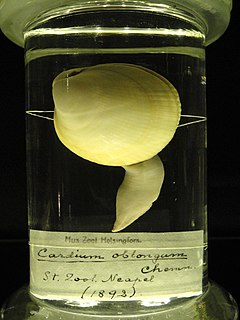
Laevicardium, common name "egg cockles", is a genus of saltwater clams or cockles, marine bivalve molluscs in the family Cardiidae, the cockles. They are unusual among the cockles in that they have smooth, rounded, "egg-like" valves.

Persoonia acerosa, commonly known as needle geebung, is a species of flowering plant in the family Proteaceae and is endemic to a restricted area of New South Wales. It is a shrub with small, channelled, needle-like leaves, yellow tubular flowers and yellowish-green, pear-shaped fruit.

Clostridium tertium is an anaerobic, motile, gram-positive bacterium. Although it can be considered an uncommon pathogen in humans, there has been substantial evidence of septic episodes in human beings. C. tertium is easily decolorized in Gram-stained smears and can be mistaken for a Gram-negative organism. However, C.tertium does not grow on selective media for Gram-negative organisms.
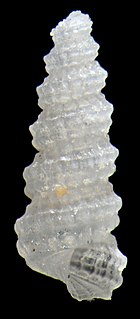
Coenaculum is a genus of medium-sized sea snails, marine gastropod molluscs in the family Cimidae.
Coenaculum minutulum is a species of sea snail, a marine gastropod mollusk in the family Cimidae. The species is one of four known species to exist within the genus, Coenaculum with the other species being Coenaculum secundum, Coenaculum tertium and Coenaculum weerdtae.
Coenaculum secundum is a species of sea snail, a marine gastropod mollusk in the family Cimidae. The species is one of four known species to exist within the genus Coenaculum, with the other species being Coenaculum minutulum, Coenaculum tertium and Coenaculum weerdtae.
Coenaculum weerdtae is a species of sea snail, a marine gastropod mollusc in the family Cimidae. The species is one of four known species to exist within the genus Coenaculum, the other three being Coenaculum minutulum, Coenaculum secundum and Coenaculum tertium.














